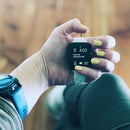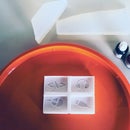Introduction: Snack Organizer | Your Serving Solution From SelfCAD
At SelfCAD help users stay at the top of tech, innovation, and design, So today I will show you how you can create an incredible snack organizer with the help of 3d printing. Interested? Well, Let`s do it together!
Step 1: Creation of a Sphere
When you create a 3d model, you can use additive and subtractive techniques, for this object, we will use subtractive modeling. We will start by creating the biggest part, we will size and position it correctly before we can move on with the subtracting process. So let’s get started
Open the sphere generator, set a radius of 64 and set the max horizontal segments, so it looks nice and smooth and Click apply, then scale down the height to 64, to flatten the model. Then use the move tool to position it in the center.
Note: As you can see, we used the same value of 64 for the original sphere and now for the scaling as well and that’s because the initial value was in radius while scaling uses size, this means that a size of 64 is the same as a radius of 32, hence making the hight half the size from the other two dimensions.
Step 2: Making a Bowl
Now, to shape the object into a bowl, we will use a subtraction method, for this we will create a copy and place it a little higher than the original. I will use Copy offsets from the Tool section. Set Y to 5 and click apply. this will create a copy that is already placed in the appropriate position.
then select both objects, open Stitch and Scoop, select the difference tool and Choose our new copy in the dropdown. I’m satisfied with the result so Let's rename the part to “bowl”.
Step 3: Bowl Customizing
To shape the Snack Organizer into our final shape, open the Bend tool, set the x value to 15 and then repeat and set x to -22. as you can see, We first we bend the object in one side and then to the other, and because I used Bend on an already bent object, it creates such an interesting effect. I think the height should be bigger, so I’m scaling it to 60.
The basic shape is done but to make our model stand well, we need a flat bottom. For this, open the Flatten tool and Drag up the bottom y gizmo a bit, then use the Move tool to Center the object again.
Next, we need to make our model thicker. For this choose the Add thickness tool, Set 1, I’m clicking the Preview button to see how I look and as it looks great! Click Apply. and Our first part is ready.
Step 4: Fastening Modelling
Now we will create 2 interchangeable parts for the sauce. First, we will model fastenings. For this use a cube with measurements: 25 width 50 height, and 30 length. and position it here. then make a copy of it and set Y to 0.
Then select both objects, Open Stitch and Scoop, select the intersection tool and click apply. Intersection allows you to leave only those parts of objects that are crossed and delete other parts. Since we used the Add thickness tool before, we can cut a perfectly suitable fastening now.
Step 5: Fastening Placing
Now we need to adjust it a bit, so it will fit nicely after printing and for this we need to Scale it a little with ‘Keep proportion’ option on. Set X to 30 and switch Keep Proportion off. And set Z to 20. and move and rotate to reposition it... The exact position and Rotation angle isn't important, as we will print each part separately. We are done :)
Step 6: First Pot Creation
Now Let's create a cute little sauce pot. for this we will use similar techniques to how we created the bowl. Create a sphere with 16 radius and apply and Click Isolate to hide all objects except the selected one. Now scale the sphere to Y to 26, making it more flatt and move to the center.
Step 7: Pot Customizing
Now we need to hollow out the object so it looks like a pot. For this use copy offset tool, and set Y to 3. Select both objects and apply difference. then make a copy of it and hide it for now. We will customize it later.
Step 8: Making a Rough Wall
Now select the visible pot and Add thickness of 1. then activate the Inflate tool and drag down the y gizmo, to reshape the bottom and move it up to Y to 58. then click show all objects to see what we made so far.
Step 9: Handle Creation
Next step we will create the handle. Let’s start with a cube. Set width to 25, height to 60 and length to 5. and Apply.
Choose the fastening and rename it to connector or something similar and Rename the other parts as well. Now, select the first handle, open the align tool and choose connector as reference and set Top in the dropdowns and Apply. then move it up to the right position.
Step 10: Handle Deforming
Now, activate the Taper tool, and set X to -50 to narrow the top part of the object.
We need 2 handles that are similar to each other. So I will first add the basic details and finalize after a make a copy of it.
Step 11: Adding a Logo
I want to add a logo -but you can skip this step. Click the image to 3D tool and choose your logo. For my image. I need to Flip Background, which inverts the cut. and the Antialiasing setting, to make the object smoother. Set Amount to 6, Resolution to 250 and Tolerance to 0.9, Blur to 3. and apply.
Using scale with ‘keep proportion’ set X to 35 and move it here. Then rotate it by 90 on the Z-axis and then use align with handle 1 as a reference. Set Middle and Front, then apply.and Move it here.
Step 12: Handle Banding
Let’s first rename those parts. Now I want to apply Bend, but it is not bending as expected. Such things happen when we don’t have enough polygons. Let’s inspect and see the difference. The logo has a lot of edges, while the other part has only 8 segments. To fix this, select this handle and apply resolution with the amount 6. You can see how the grid has changed. And now we can apply Bend but Before doing it I will make a copy and hide them. I`ll also rename them.
Now, let’s Taper it with the value of - 50 on Z. Next, apply Bend. Make it look like this. And apply Bend again, to make the bent angle bigger then adjust The pot position
Step 13: Handle Twisting
To make the handle look more interesting apply Twist with a value of 25. But as you can see, we have a problem. So to fix this, I’ll move it a little, then select all 3 objects and apply Merge, so we have 1 solid object. then, choose cube selection and select all except the bottom, so when we apply Twist - we will not move these polygons. Let's try. Apply the Twist and it looks amazing! now Unselect and copy the connector. then Select this and apply Merge. and Rename it.
Step 14: Second Pot Customizing
Now let’s move on to the second pot. let’s unhide the copies we created before then we will Scale, Add thickness, and Inflate, to customize the second sauce pot.
Step 15: Bulkhead Drawing
For this design, we will create a bulkhead using drawing and to make the workspace into a drawing canvas, I will set Top view and Orthographic projection. Now, Choose freehand drawing and select the Front-Back plane. Let me first show how they work and now for this, we will turn off the other plans and leave only the Front-Back plane which is what we need. I will also leave the default center position, so it’s directly drawing where we need them.
Unhide the pot and activate spline brush with 10 as smoothness and set 3 as Height and start drawing around the shape then. Click finalize. Select both objects and merge them. then Move by 58 on the Y-axis and Rotate by 90 on the Y. Axis as well.
Step 16: Applying Bend
Now unhide the bowl and the other handle and apply Bend. then select the connector with the handle and position them correctly. So simple!.
Final note: We created a bowl with 2 different handles. Now we can print it and use it every day! Remember to like, comment, subscribe and ring the bell for updates!













